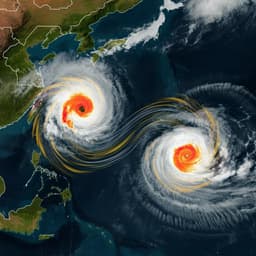
Earth Sciences
Climatic and tectonic drivers shaped the tropical distribution of coral reefs
L. A. Jones, P. D. Mannion, et al.
This groundbreaking study by Lewis A. Jones and colleagues explores how climate and palaeogeography have historically influenced coral reef distribution over geological timescales. Discover how a wider tropical belt supported diverse reef habitats in the Mesozoic era, and why future global warming may not be enough for coral reefs to adapt to rapid climate changes.
Playback language: English
Related Publications
Explore these studies to deepen your understanding of the subject.







